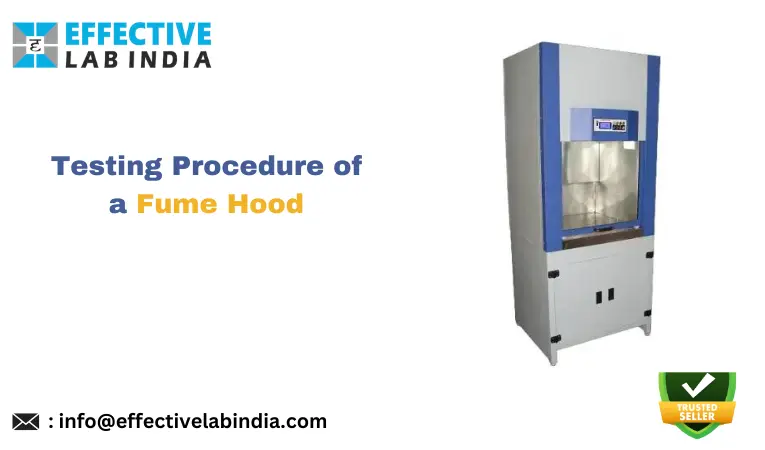Fume hoods are intended to protect individuals who work with chemicals that may emit harmful fumes, vapours, or particles. In a fume hood, an airflow is created that draws dust and pollutants away from where the worker stands. After installation and at regular intervals the testing hoods ensure they perform as intended, but it must be done consistently and systematically. This is why every chemistry lab should implement a fume hood testing procedure.
It is a good idea to test a fume hood right after installation. This illustrates that it will keep fumes and particulates away from anyone working on the hood. It also serves as a benchmark for measuring any changes in performance.
Factors affecting
Air nearly seldom travels in straight lines. It is typically filled with turbulence and eddies, making it difficult to forecast how fumes and particulates will travel across a space. With fume hoods, this means that while peak airflow velocity is sufficient in other regions, the air may remain motionless or move toward someone nearby.
Factors that impact fume hood performance include:
Hood design: While all hoods are open-front cabinets, how ventilation is regulated varies. Some employ merely an extraction fan to draw air through the entrance, while others add auxiliary air to increase flow. Auxiliary air systems can be either constant or variable air volume kinds.
Ventilation in the lab: Opening a window or propping a door will significantly alter airflow through the lab and, as a result, the efficacy of the fume hood. Similarly, changes to the lab’s HVAC system or architecture can have an impact on airflow through the hood.
Lab staff work practices: A common issue is equipment left within or near the fume hood. This alters airflow in unforeseen ways and might result in dead zones where fumes accumulate. People moving swiftly past the entrance, as well as the lab door opening and closing fast, disrupt airflow.
Fume hoods feature sliding screens, known as sashes, at the opening. These are designed to be brought close to reduce fume and particulate escape while increasing airflow. Sashes have optimal settings that some persons working at hoods may prefer not to use (or may be unable to utilize) due to the nature of their work. Furthermore, airflow can be affected by proximity to the hood, as well as the size of the person using it.
Stability of exhaust ventilation system: When a single extraction system serves numerous hoods, a change in one affects airflow throughout the system.
Testing Procedure
OSHA has established certain fume hood testing criteria. It requires hoods to be inspected at least once a year. However, many lab operators demand fume hood users to conduct more frequent checks.
The ASHRAE 110 process is the preferred way to conduct testing. It consists of three components, each of which is rated as fail, bad, fair, or good. The components, and the order in which they should be completed, are:
- Flow visualization
- Face Velocity Measurement
- Tracer gas containment
Flow visualization is accomplished using smoke. Smoke testing distinguishes between local and gross smoke. Local is where smoke is emitted inside the hood and an observer confirms that none escapes.
Face velocity measurement refers to monitoring airspeed at the hood opening. Because airflow varies around the hole, it is best to divide it into squares and measure velocity in each one. Fume Hood manufacturers have specifications for how they achieve this, including sash placements and recording speeds.
A tracer gas can be measured using a detector attached to a mannequin placed where the user would stand in front of the hood. A gas is discharged into the hood, and the detector determines whether the operator was exposed.

